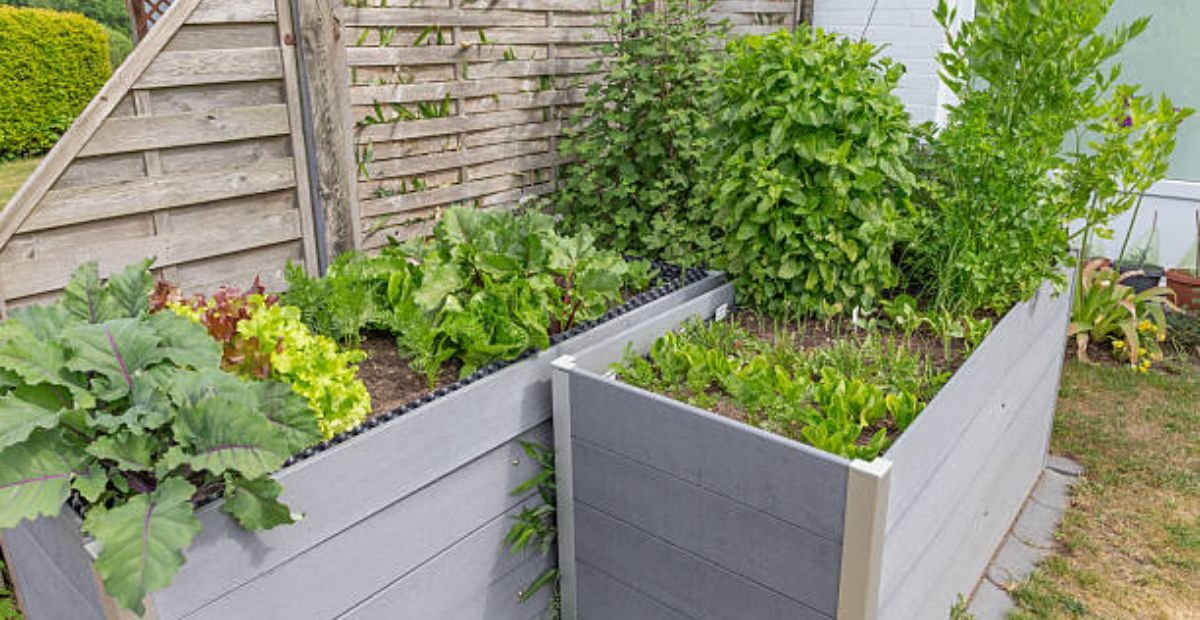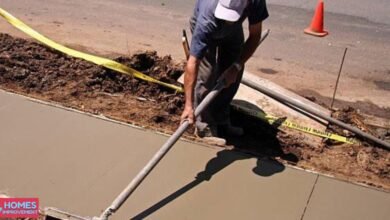Raised Garden Bed DIY Setup: Everything You Need to Know from Start to Finish

A raised garden bed is a simple and effective way to grow plants in a controlled space. It improves soil quality, reduces weeds, and makes gardening easier for everyone. This DIY method works well in small yards and even urban setups. Whether you’re new or experienced, it’s a smart gardening solution.
This guide covers everything you need to know from setup to planting. You’ll learn how to build, fill, and maintain a raised garden bed step by step. With the right tools and planning, anyone can do it on a budget. Let’s begin your gardening journey the easy way!
Why Choose a Raised Garden Bed?
A raised garden bed is a smart solution for gardening enthusiasts who want more control over soil quality, water drainage, and pests. Compared to traditional gardens, raised beds offer convenience and accessibility, especially for those with limited space or poor soil conditions. They also warm up faster in the spring, which means earlier planting and longer growing seasons. If you’re just starting your gardening journey or looking to upgrade your backyard setup, a raised bed can be the perfect choice. From vegetables and herbs to flowers, this structure allows you to grow a wide range of plants efficiently. Plus, the elevation reduces back strain, making gardening more enjoyable.
Planning Your Raised Garden Bed Setup
Planning is the foundation of a productive raised garden bed. Start by selecting a location that gets 6–8 hours of sunlight daily, as most vegetables need full sun to thrive. The area should be flat and well-drained to prevent water pooling. Also, try to place it near a water source to make regular watering easier. Good planning here prevents future issues with plant health and access.
Next, decide the size and shape of your garden bed. A 4×4 or 4×8 ft bed is ideal for beginners, as it’s easy to reach from all sides. Leave at least 2 feet of space around the bed for comfortable movement. Planning your layout ahead of time ensures a smoother and more enjoyable building process.
Materials and Tools You’ll Need
To build a sturdy and long-lasting raised garden bed, you don’t need expensive equipment—just the right materials and basic tools. Most items can be found at your local hardware store, and if you already have some tools at home, the setup becomes even easier. Choose durable, non-treated wood or weather-resistant materials for the frame. Don’t forget quality soil, compost, and a weed barrier for healthy plant growth. Having the right tools on hand ensures a smooth and hassle-free building process.
Essential Materials:
- Untreated wood (pine, cedar, or composite boards)
- Landscape fabric (to block weeds)
- Garden soil + compost mix
- Mulch (optional, for moisture retention)
- Screws or corner brackets
Basic Tools Required:
- Drill or screwdriver
- Measuring tape
- Hand saw (if cutting wood)
- Level (to ensure the bed is flat)
- Gardening gloves
How to Build Your Raised Garden Bed (Step-by-Step)
Building a raised garden bed is a simple weekend project that pays off with healthy plants and easy maintenance. With a few tools and basic materials, you can create a durable bed that suits your space and needs. The key is to follow each step carefully—from assembling the frame to filling it with the right soil mix. Once built, your bed will be ready for planting vegetables, herbs, or flowers. It’s a beginner-friendly project that’s both affordable and rewarding.
Step-by-Step Instructions:
- Measure and Cut Materials – Decide the size of your bed and cut the boards accordingly.
- Assemble the Frame – Use screws and a drill to connect the boards into a rectangle.
- Choose and Clear the Location – Pick a sunny, level spot and remove grass or debris.
- Place the Frame – Set your frame in position and ensure it’s level on all sides.
- Line the Bottom – Add landscape fabric to block weeds and improve drainage.
- Fill with Soil Mix – Add a rich blend of topsoil, compost, and peat moss or coco coir.
- Water the Soil – Lightly water the bed to help soil settle before planting.
- Start Planting – Add seeds or seedlings according to your garden plan.
What to Plant in a Raised Garden Bed
A raised garden bed is versatile and allows you to grow a variety of plants, depending on the season and your region. Popular options include tomatoes, lettuce, carrots, radishes, peppers, spinach, and herbs like basil or cilantro. Make sure you follow companion planting strategies—planting crops that support each other’s growth. Raised beds drain faster, so moisture-loving plants may need more attention. Add vertical supports for climbing plants like beans or cucumbers. Because the soil warms up quicker, you can start planting earlier in spring. Use a planting calendar or app to plan what to grow each month for a continuous harvest throughout the year.
Watering and Fertilizing Tips
Proper watering and fertilizing are essential to keep your raised garden bed thriving throughout the season. Since raised beds drain faster than traditional soil, they may require more frequent watering—especially during hot or windy days. A consistent watering routine ensures healthy root development and prevents wilting. Fertilizing with organic materials like compost or fish emulsion helps maintain nutrient-rich soil. The goal is to nourish plants without overfeeding or washing away nutrients. With a little care, you can grow strong, productive plants in your raised bed.
Watering Tips:
- Water early in the morning or late afternoon to reduce evaporation
- Use a drip system or soaker hose for even moisture
- Check soil 2 inches deep—if dry, it’s time to water
- Avoid watering leaves directly to prevent fungal issues
Fertilizing Tips:
- Mix compost into the soil every few weeks
- Use organic fertilizers like fish emulsion or seaweed extract
- Avoid chemical fertilizers that can harm beneficial soil microbes
- Apply mulch to retain nutrients and moisture
Seasonal Maintenance and Crop Rotation
Keeping your raised garden bed productive year-round requires some seasonal care. At the end of each growing season, remove dead plants and weeds. Add fresh compost or organic matter to replenish nutrients. Rotate crops to prevent soil depletion and reduce the risk of pests and diseases. For example, avoid planting tomatoes in the same spot year after year. During winter, you can cover your bed with mulch or plant cover crops to protect the soil. Cleaning tools, checking bed structure, and repairing damage in the off-season ensures your setup lasts longer. These habits make sure your garden bed thrives season after season.
Benefits of Using a Raised Garden Bed
A raised garden bed brings both convenience and productivity to your gardening experience. Its elevated design allows for better control over soil quality, drainage, and layout. These beds are ideal for growing vegetables, herbs, or flowers in limited spaces and make gardening easier on the back and knees. Raised beds warm up faster in spring, enabling early planting, and they also help reduce common problems like weeds and pests. Whether you’re a beginner or a seasoned grower, raised beds simplify gardening and maximize your harvest potential.
Key Benefits:
- Better control over soil quality and composition
- Improved water drainage and root development
- Less bending, ideal for seniors or people with joint issues
- Reduced weed growth and pest invasion
- Allows early planting due to warmer soil
- Great for small yards or urban gardening
- Visually organized and easy to maintain layout
Cost Breakdown: What’s the Budget for a Raised Garden Bed?
Setting up a raised garden bed is flexible and budget-friendly, whether you’re using basic materials or going for a premium setup. Your total cost depends on size, wood type, and additional accessories. Here’s a simple breakdown to help you estimate expenses before starting.
| Item | Details | Estimated Cost (USD) |
| Wood/Frame Material | Pine ($) / Cedar ()/Composite() / Composite ()/Composite() | $30 – $120 |
| Soil & Compost | Garden soil + compost mix | $40 – $70 |
| Landscape Fabric (Optional) | Weed barrier lining | $10 – $20 |
| Screws & Fasteners | For assembling the frame | $5 – $10 |
| Mulch (Optional) | For moisture retention | $10 – $15 |
| Tools (One-time Investment) | Drill, saw, level (if not available) | $0 – $40 |
Estimated Total Budget: $60 to $150 (can be lower with recycled materials)
Common Mistakes to Avoid
Even with the best intentions, many beginners make small mistakes that can affect the success of their raised garden bed. Knowing what to avoid can save time, money, and frustration. One of the most common issues is using the wrong type of wood—non-treated wood rots quickly, while chemically treated wood can harm plants. Others often skip weed barriers or overcrowd their beds, which leads to poor airflow and disease. With a bit of awareness, these mistakes can easily be avoided for a healthier and more productive garden.
Mistakes to Avoid:
- Using treated wood that leaches harmful chemicals into the soil\
- Skipping landscape fabric, leading to aggressive weed growth
- Overcrowding plants and limiting air circulation
- Choosing a shaded area with insufficient sunlight
- Not filling the bed with quality, nutrient-rich soil
- Overwatering or underwatering, depending on the weather
- Ignoring crop rotation, which weakens the soil over time
Conclusion
Creating a raised garden bed is an excellent way to enjoy home gardening with better results and less hassle. From planning and building to planting and maintenance, each step is simple when approached methodically. Whether you’re growing vegetables, herbs, or flowers, raised beds make gardening more accessible, especially for beginners. With this complete A to Z guide, you’re equipped to start your garden confidently and avoid common pitfalls. As you maintain your bed over time, you’ll enjoy the fresh harvest and the satisfaction of a project you built yourself. Gardening just got easier—and more enjoyable—with a raised garden bed.
FAQs
How deep should a raised garden bed be?
A raised garden bed should be at least 10–12 inches deep to allow roots to grow well. Deeper beds are ideal for root vegetables like carrots or potatoes.
What type of soil is best for raised beds?
Use a mix of topsoil, compost, and peat moss or coco coir. This blend provides nutrients, drainage, and aeration essential for healthy plant growth.
Can I place a raised garden bed on concrete?
Yes, you can place it on concrete, but make sure to line the bottom with landscape fabric and provide adequate drainage through holes or gravel.
Do I need to line the bottom of a raised garden bed?
Yes, lining the bed with landscape fabric helps prevent weed growth and keeps soil in place while allowing proper drainage.
How often should I water a raised garden bed?
Depending on weather and soil type, water 2–3 times a week. During hot seasons, raised beds may require daily watering to prevent drying out.




